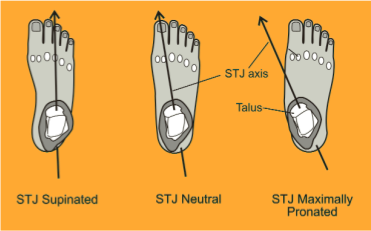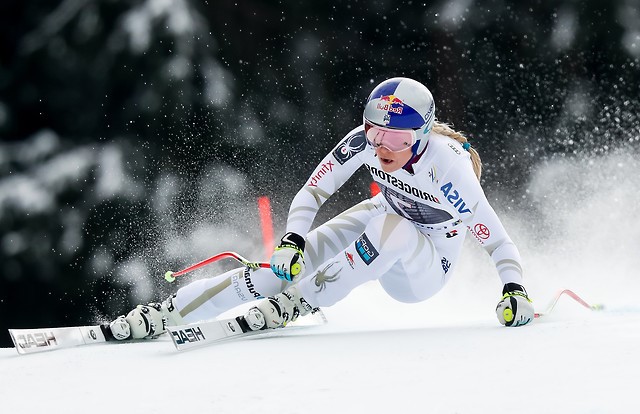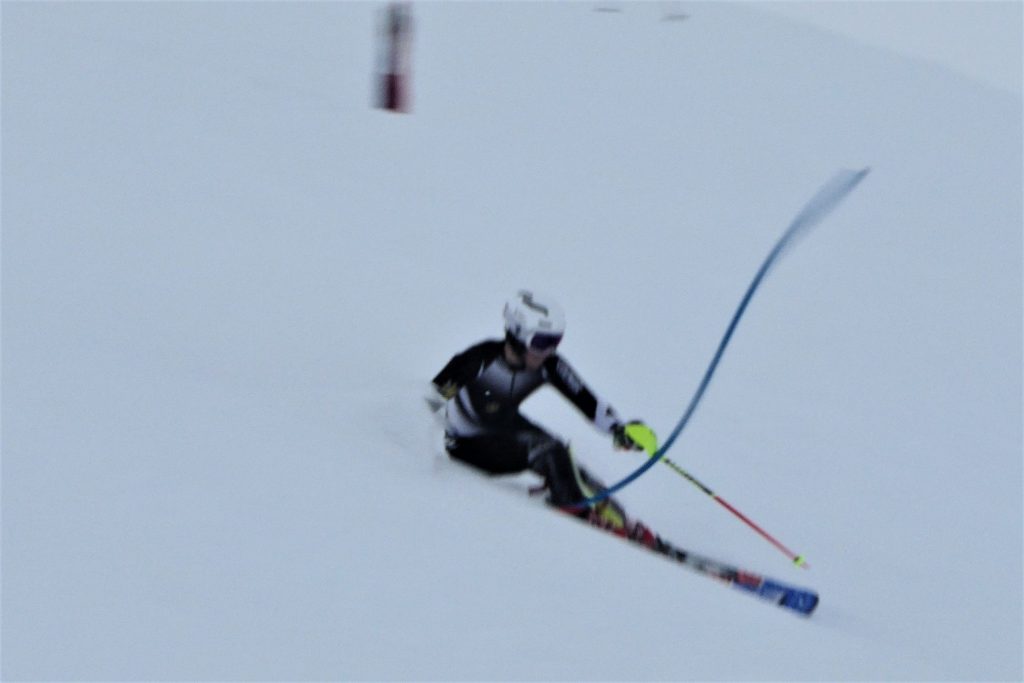The video was rushed but still gives an overview of where we currently are. I’ll not say anything about it here as we were playing with too many changing parameters – next session there will be better weather and the video will be more specific.
Key Question
Ruth was asked the key question; “How do you start a turn?”.
Interestingly the response consisted of moving the body into the turn but then came a visible confusion as to how to detail the movement. Moving the body into the turn is what Ruth is doing naturally – but transferring weight to the outside ski of the turn – by moving the centre of mass over it – (hence out of the turn) is what Ruth has actually been taught. Not being Ruths primary and sole raison d’être this just left an unresolved contradiction. Most people experience this contradiction on one level or another but they assume it’s their own problem – when it’s really the education system that’s at fault.
In only 4 hours we covered and outline of what I consider the three main building blocks of skiing:
Dynamics (including skating/feet)
Pivot (skis working laterally/braking)
Hip Angulation (how to NOT face downhill)
…not only that but we pretty much did it all in a blizzard.
Ideally both Ruth and Richard should read through the linked pages from the menu at the top of this page – Dynamics, Beginners (skating), Pivot and Chiskiing (hip angulation) – but I’ll list below all the issues we attempted to introduce and integrate today…
Feet
- Pronation of the subtalar joints of both feet simultaneously to place the feet on their inside edges
- Activation of the adductor muscles of the inner/upper legs
- This is for a solid support base for active dynamics/skating – so the ski is not pushed sideways and the centre of mass is moved inward instead


Dynamics
- This is mainly about using the outside leg (start of new turn) to push the centre of mass into the centre of the new turn – for the whole duration of the turn
- Notice in the photo below the outside leg is essentially straight in a skating action and flexion for absorption and other purposes is at the hip joint
- The centre of mass goes down toward the snow – and to complete the turn it comes back up – like a motorbike in a turn

End of Turn Dynamics
- The basic rule is to let the ski lift you up and lever you out of the turn
- Sometimes the opposite applies – the legs are retracted at the end as the body passes over the skis with momentum
- For difficult off piste use the “lift up” principle and come over the top of the outside ski through the turn completion – a good (extreme) example is given in the photo below…

Skating
- Skiing is a form of skating – with skis diverging we can move the centre of mass directly and combine it with falling incrementally forward and laterally
- With added body inclination the ski will go strongly on its edge and start turning – whereas a normal skate just scribes a straight line
- Make one turn one skate
Pivot
- Skis also travel sideways – side slipping
- The ski turns more efficiently into a turn from its outside edge (compared to a stem and inside edge)
- This lateral movement requires solid pole planting (downhill) to control the centre of mass
- This is a braking form of skiing (fall-line skiing) – always on the uphill edges
Combining
- Dynamics depends of forward motion of the skis and lateral falling/pushing of the centre of mass
- Pivot depends on lateral motion of the skis – but always with the centre of mass being driven inward
- The two can be combined – when there is both forward and lateral motion – making overall control of trajectory and speed totally under control of the skier
Hip Angulation
- Ensure neutral pelvic tilt relative to the lumbar spine
- Tilt forward at the hip joints
- Pulling back the outside hip (abdominal postural reflex)
- Chest and shoulders do NOT face downhill
- Hold the arms, hands in the “goalkeeper” position

Photos from the valley below (Aime) today…




